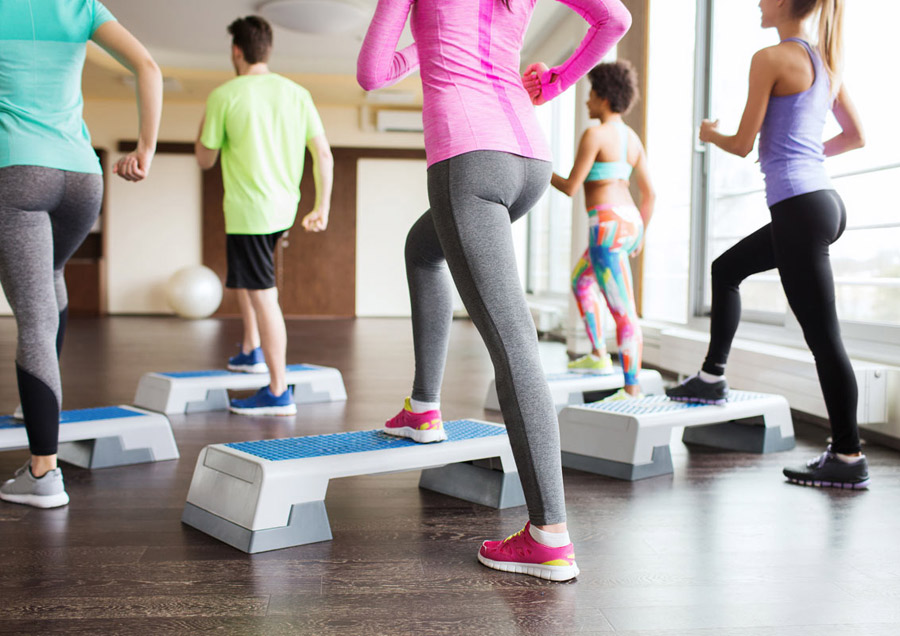Stair Stepping

Stairstepping is an excellent cardiovascular exercise. It is popular because of its numerous benefits. And because it is relatively easy on the bones, joints, ligaments, and tendons-it is a great alternative for women who have orthopedic limitations that prohibit the repetitious pounding of bodyweight during activities such as walking and running. Benefits include greatly increased cardio-respiratory health, decreased body fat, decreased risk of heart disease, a very low risk of injury, and improved leg and back muscle endurance.
- Stairstepping works well for those who are in moderate to good shape and who prefer to exercise indoors. (Have a staff member instruct you or study the manual on how to enter your weight, select a program, and set the speed/intensity level.)
- First grasp the handrails of the stairstepper and step up onto the pedals. Stand upright and allow the pedals to sink slowly and settle to the bottom.
- Begin stepping by lifting each foot as if you were walking up stairs, while either holding on to the handrails or pumping your arms back and forth.
- Don't push the pedals downward-simply lift your feet up one after the other. Your back should be straight and your abdominal tight.
- Never lean on the machine or the handrails-this decreases the work performed and can result in injury. The handrails are intended to stabilize, not to support. If it is too difficult for you to let go and pump your arms, stand upright and hold onto the handrails at chest height.>
- Step at a comfortable speed that allows you to stay in the middle range. That is, the pedals should not touch the floor except at the beginning or at the end of the workout, or during a rest period. The pedal should also not touch the upper-stop-this will cause your foot to lift off the pedal resulting in a jerking, uncomfortable exercise motion.
- Always warm-up, stretch, and cool-down during your stairstepping session. Begin each session by stepping at very low intensities for 5-10 minutes (warm-up) and then stretch your calves, quadriceps, hamstrings, hips, and low back muscles (refer to out Flexibility Training component for the principles and techniques of stretching.) After your exercise session, cool-down by stepping at very low . Refer to the Cardiovascular contents for the principles and guidelines of a safe and effective cardiovascular exercise program-including recommendations for duration, frequency, and intensity (and how to monitor it) of a program that is right for you and the goals you want to achieve.